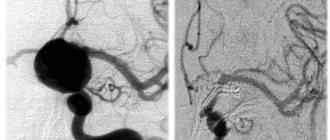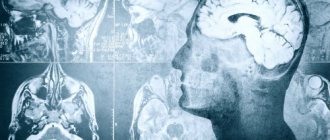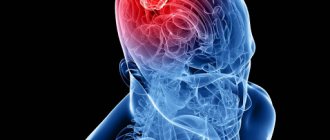Published: 07/23/2021 14:15:00 Updated: 07/23/2021
Atherosclerosis is a systemic disease that primarily affects the arteries. Cholesterol is deposited in the walls of blood vessels, resulting in the formation of plaques that interfere with normal blood flow. Internal organs experience a lack of oxygen and nutrients, and with the slow progression of the pathology, their work is gradually disrupted. In the case of acute thrombosis with complete blockage of blood flow, severe complications may develop - myocardial infarction, stroke, gangrene of the lower extremities and other dangerous pathologies.
Reasons for appearance
The appearance of atherosclerosis is associated with metabolic disorders in the body, lipid imbalance and excess cholesterol in the blood.
Mechanical damage to the vessel wall also plays an important role, contributing to atherosclerotic deposits and plaque formation at the site of injury. The risk of developing atherosclerosis is higher in men over 45 years of age, women over 55 years of age or with early menopause, as well as among people with familial hypercholesterolemia and family history, whose relatives already suffer from this disease.
Other factors contribute to it:
- unbalanced diet with an abundance of fatty foods;
- excess body weight;
- smoking;
- alcohol abuse;
- sedentary lifestyle;
- cardiovascular diseases – ischemic heart disease, arterial hypertension;
- endocrine pathologies, in particular diabetes.
Make an appointment with a neurologist
Clinic No. 1 in Moscow offers a consultation with a neurologist. Among the main advantages of a multidisciplinary medical center are experienced doctors, the latest equipment, comfortable conditions and safety for patients, as well as a convenient location of the clinic and a flexible system of discounts. You can make an appointment through the website or by phone.
Moscow, st. Krasnodarskaya, house. 52, bldg. 2
+7
We work on weekdays and weekends from 8.00 to 21.00
Classification of the disease
The formation of atherosclerotic plaques can occur in individual vessels or affect most of them. Depending on the organ in which blood flow is reduced and the affected artery, the following forms of the disease are distinguished:
- Heart shape. Ischemic atherosclerosis with damage to coronary vessels and valves.
- Kidney form. The renal arteries are affected.
- Brain (cerebral) form. The disease spreads to intracranial vessels.
- Intestinal form. The mesenteric arteries are affected.
- Atherosclerosis of the aorta. Its abdominal region is most often affected.
- Atherosclerosis of the arteries of the lower extremities, mainly femoral.
- Atherosclerosis of brachiocephalic vessels. These include the right carotid, vertebral and subclavian arteries.
Forecast
Carotid atherosclerosis carries a significant risk of ischemic stroke. With asymptomatic narrowing of the internal carotid artery of more than 70%, the risk of ischemic stroke exceeds 5% per year. If the patient has had episodes of cerebrovascular accidents, then this risk is already 25% per year.
The risk of ischemic stroke in asymptomatic atherosclerotic plaques with a narrowing of less than 70% does not exceed that in patients without atherosclerosis.
After adequate restoration of blood circulation in the carotid arteries, the risk of ischemic stroke is reduced by more than 3 times.
Symptoms of atherosclerosis
For years and even decades, the disease can occur without clinical manifestations.
Subsequently, signs of poor blood supply to various organs are observed. With atherosclerosis of the heart, the patient is bothered by “squeezing” pain behind the sternum during physical activity - angina pectoris, arrhythmia, a feeling of palpitations accompanied by shortness of breath, and the development of myocardial infarction is possible.
In case of damage to the abdominal vessels, there may be attacks of pain in the upper and middle parts of the abdomen, which are accompanied by increased gas formation and constipation.
Atherosclerosis of the cerebral arteries manifests itself in dizziness and short-term episodes of loss of consciousness, and tinnitus. As the disease progresses, a stroke may develop with its neurological symptoms - dizziness, headache, lack of coordination and disorientation, numbness or weakness of the muscles of the face, arms or legs of one side of the body, sudden speech disturbances, visual disturbances, prolonged unconsciousness.
Vascular thrombosis of the lower extremities can lead to numbness and discoloration of the skin of the legs, a crawling sensation, and muscle pain when walking - “intermittent claudication.” Subsequently, the skin becomes thin and dry, peels, nails thicken, difficult-to-heal trophic ulcers form, and frequent cramps appear.
The main symptom of renal artery disease is an uncontrolled increase in blood pressure, leading to drug-resistant hypertension.
Diagnosis of atherosclerosis
The diagnosis is based primarily on the results of laboratory tests and data from instrumental research methods.
A conversation with a patient only allows us to identify risk factors for the development of diseases and, together with an examination, as well as consultation with other specialists, suggest which organs have already been affected by the disease. Diagnosis of atherosclerosis necessarily includes:
- Blood chemistry.
- Ultrasound of the heart and blood vessels.
- Electrocardiography.
A high predisposition to the development of the disease is indicated by changes such as an increase in the concentration of total cholesterol, triglycerides, low- and very low-density lipoproteins, and a decrease in the amount of high-density lipoproteins.
Innovative risk factors for atherosclerosis include C-reactive protein (CRP), apolipoproteins A1 (apoA1) and B-100 (apoB), some polymorphisms of endothelial synthase genes (NOS3G894T, NOS3T(-786)C) and blood coagulation factors FV and FII. To obtain accurate results of a blood test for atherosclerosis, three days before the test you should give up fatty, cholesterol-rich foods, and 8-10 hours before, eat nothing at all and drink a lot of liquid. 30 minutes before the test, you should avoid strong emotional stress, stress, and do not smoke.
Echocardiography clearly shows signs of atherosclerosis of the heart valves and aorta. According to indications, ultrasound scanning of the brachiocephalic, transcranial, and arterial vessels of the lower extremities is also performed.
Reflects disturbances in heart rhythm and electrical conductivity of the organ. Exercise testing may be performed to detect exertional angina.
The standard list of laboratory tests also includes a general clinical blood test and a general urinalysis.
Additionally, for the purpose of differential diagnosis, blood tests for the level of fibrinogen, homocysteine, antibodies to cardiolipin (IgG and IgM), and lupus anticoagulant may be recommended. To visualize atherosclerotic plaques, according to indications, angiography is used - an X-ray examination with the introduction of a contrast agent. In case of preparation for surgery on the heart vessels, coronary angiography is performed.
The “gold standard” for diagnosing pathological changes in the arteries of the brain and parenchymal organs is spiral computed tomography with contrast.
Often such patients are recommended to consult an ophthalmologist. Fundus ophthalmoscopy reveals signs of atherosclerotic damage to small retinal vessels.
Appointment with an angiosurgeon
A consultation with a vascular surgeon does not require any special preparation. Before going to the clinic, take a hygienic shower and put on clean underwear. Don't forget to bring a medical card with your medical history.
During the interview, the specialist may need the results of previously conducted examinations and tests, so if you have any on hand, take them with you. Tell the specialist your family history if your closest blood relatives have had acute or chronic diseases of the veins or arteries.
For a full diagnosis and final diagnosis, you may be prescribed the following studies:
- Laboratory blood tests (general, biochemical, lipid profile, prothrombin time, detailed coagulogram, etc.);
- Electrocardiogram;
- Echocardiogram;
- Ultrasound duplex scanning of blood vessels;
- Doppler ultrasound;
- Angiography (including cerebral and coronary);
- Ultrasound, CT, MRI;
- Endoscopy;
- Sonography.
The specialist conducts anthropometry directly during a face-to-face visit (the patient’s height and weight, body mass index, body fat density, constitutional body type and other indicators are assessed).
The angiosurgeon may require the opinion of related specialized specialists, to whom he will refer you if necessary.
Treatment
Treatment of atherosclerosis begins with correction of diet and lifestyle changes.
All patients are recommended to lose weight, moderate physical activity, and quit smoking and alcohol. Often the cause of atherosclerosis is a nutritional factor, so diet plays a very important role. To reduce the concentration of cholesterol in the blood, it is important to avoid meat broths, fatty, salty, smoked foods, semi-finished products, spicy, spicy, fried foods, and limit the consumption of table salt.
Prohibited products include:
- sugar;
- confectionery, sweets;
- mayonnaise, tomato and other store-bought sauces;
- bakery products made from wheat flour;
- offal;
- sweet carbonated drinks;
- industrially produced juices and nectars;
- cocoa;
- canned meat and fish;
- dried fruits high in sugars;
- strong coffee and tea.
It is recommended to eat split meals five times a day, including a sufficient amount of fiber, protein (lean meats and fish, low-fat cottage cheese), fresh vegetables (except potatoes), fruits, and dairy products.
Drug therapy is aimed at:
- decreased cholesterol synthesis (statins, fibrates);
- decreased absorption of fats from food (cholesterol absorption inhibitors, bile acid sequestrants);
- prevention of thromboembolic complications (antiplatelet agents);
- relief of symptoms of atherosclerosis (painkillers, antispasmodics).
To determine indications for surgical treatment, the degree of disruption of blood flow in the vessel is determined.
An overlap of its lumen of less than 50% is considered hemodynamically insignificant; with stenosis of 50-70%, only drug therapy is usually carried out. Correction of arterial obstruction surgically must be performed in the third stage of atherosclerosis and narrowing of the lumen by more than 70%. There are two main types of surgical intervention:
- Balloon angioplasty. A balloon is inflated inside the affected vessel, while the atherosclerotic plaque is flattened and evenly distributed along the artery wall. At the end of the manipulation, the device is removed.
- Arterial stenting. During the operation, a thin lattice cylinder is inserted and opened in the area of narrowing. It also presses against the plaque, but remains in the lumen of the vessel, gradually growing into its endothelium.
Treatment of cerebral atherosclerosis at the Mother and Child clinic
Doctors at the Mother and Child clinic provide comprehensive treatment of atherosclerosis: medicinal and non-medicinal.
Drugs are prescribed to correct lipid metabolism, reduce blood pressure, cholesterol levels, eliminate vitamin deficiency, and strengthen the walls of blood vessels. Pharmaceuticals have reached a new level, and innovative products demonstrate high effectiveness in the treatment of atherosclerosis. To reduce threats, additional therapy is carried out for current chronic diseases: diabetes, hypertension, hormonal imbalance, etc.
Non-drug treatment consists of adjusting lifestyle and nutrition. The doctor prescribes recommendations on an individual basis, taking into account the patient’s age, professional activity, and interests. This includes proper nutrition, a healthy lifestyle, vitamin complexes, restorative and spa activities can be recommended.
If conservative treatment is unable to reduce the risk of stroke and achieve the desired effect, surgery may be considered. Stenting allows you to restore the lumen of the vessel. Stent installation is a minimally invasive operation, after which the patient’s quality of life improves and the risk of developing tissue ischemia is neutralized.
Complications
Atherosclerosis of the lower extremities is dangerous due to the development of gangrene, muscle atrophy, and thromboembolism of blood vessels of vital organs in the event of plaque rupture.
Cardiac complications with damage to the coronary vessels include myocardial infarction, focal dystrophy of the heart muscle, myocardiosclerosis, and coronary sclerosis.
With obstruction of the mesenteric arteries, ischemic colitis and intestinal gangrene are possible, and secondary arterial hypertension is possible in the renal arteries. Cerebral consequences include hemorrhagic and ischemic stroke, transient ischemic attacks, and atherosclerotic dementia.
An aortic aneurysm poses a danger to the patient's life, the rupture of which in most cases is fatal.
Prevention of atherosclerosis
For patients with a family history and age-related predisposition, a screening examination is recommended to determine the risk of developing cardiovascular pathology.
It aims to detect laboratory and genetic markers of the disease. Prevention of atherosclerosis includes weight control, proper nutrition, sufficient physical activity, giving up bad habits, and timely treatment of chronic diseases.
Author:
Pugonina Tatyana Alekseevna, Therapist
What does a specialist do?
A vascular surgeon works in the following areas:
- Diagnosis, treatment and prevention of vascular (arterial and venous) diseases;
- Timely detection of oncopathologies (when a malignant tumor is localized in close proximity to large vessels);
- Treatment of vascular lesions that occur due to severe injuries;
- Prosthetics of vessels damaged due to injury or surgery;
- Performing full and minor surgical interventions on veins and arteries;
- Removal of genetically determined vascular abnormalities (malformations, hemangiomas, etc.);
- Replantology (microsurgical intervention aimed at complete or partial reconstruction of limbs or their fragments after radical amputation);
- Prevention aimed at preventing the development of vascular diseases in patients at risk.
The prognosis of treatment directly depends on the degree of qualification of the specialist, his clinical experience, skills, as well as the timeliness of the patient’s contact with him.









